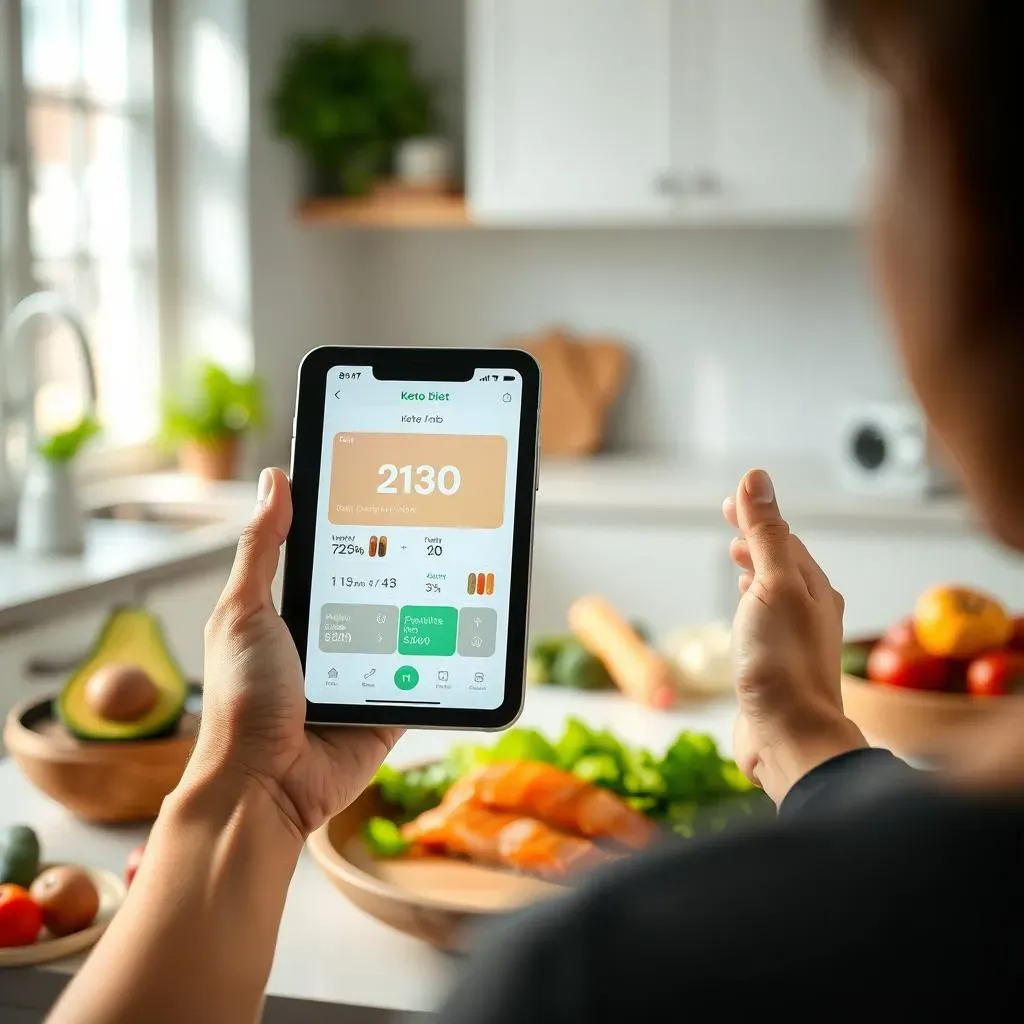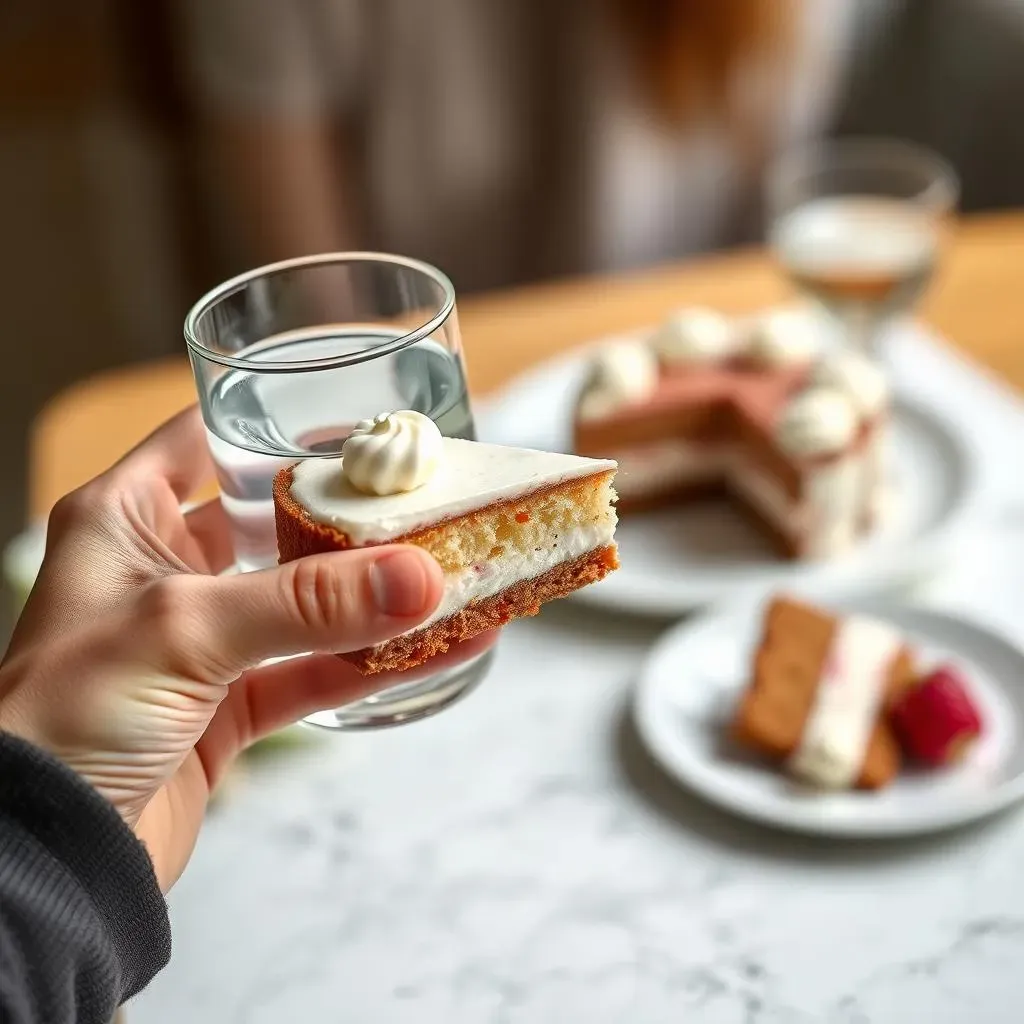Table of Contents
So, you're on the keto diet, diligently tracking your macros and enjoying the benefits. But then… a birthday party, a holiday gathering, or maybe just a serious craving for cake. That delicious, sugary, carb-laden slice of heaven stares you down. The question burning in your mind? "Will a piece of cake ruin my keto diet?" This article tackles that very question, exploring the effects of a single carb-heavy treat on your ketosis journey. We'll unpack what ketosis is and how many carbs you can consume before it's impacted. Then we'll examine the potential consequences of that tempting piece of cake, looking at what might happen to your weight loss progress and your overall ketone levels. Finally, we'll show you how to recover and get back into ketosis if you've already succumbed to the sugary siren song. Get ready to discover the truth about keto and those occasional indulgences – let's dive in!
Understanding Keto and Carb Limits
Understanding Keto and Carb Limits
What is Ketosis?
Ketosis is all about how your body gets energy. Normally, your body uses glucose (sugar) from carbs for fuel. But on a keto diet, you drastically reduce carbs. This forces your body to find another energy source: fat! Your liver starts breaking down fat into ketones, which become your body's primary fuel. This metabolic state is called ketosis, and it's the key to many keto benefits. Think of it like switching your car from gasoline to a different type of fuel—it still runs, just differently.
Now, how many carbs can you eat and still stay in ketosis? That's the million-dollar question, and the answer isn't one-size-fits-all. It depends on various factors like your activity level, metabolism, and even your genetics. Generally, most people aim for 20-50 grams of net carbs per day. Net carbs are the total carbs minus fiber, as fiber doesn't get digested and impact blood sugar. Want to learn more about calculating your net carbs? Check out our guide on low-carb cakes to get a better understanding of carb counting!
Factor | Impact on Carb Limit |
|---|---|
Activity Level | Higher activity may allow slightly higher carb intake. |
Metabolism | Faster metabolism may allow slightly higher carb intake. |
Individual Sensitivity | Some people are more sensitive to carbs than others. |
Tracking Your Carbs: The Keto Challenge
Tracking your carbs is crucial for staying in ketosis. It's like playing a game where you have a limited number of "carb points" each day. You need to carefully plan your meals and snacks to stay within your budget. There are tons of apps and websites to help you track your intake, but even a simple notebook can do the trick. Consider using a food scale for accurate measurements, especially when starting out. Paying attention to hidden carbs in sauces, dressings, and even some vegetables is important. For example, that seemingly innocent serving of ketchup packs a surprising number of carbs!
Remember, consistency is key. Sticking to your daily carb limit is what allows your body to enter and maintain ketosis. If you're unsure about how to track your carbs effectively, take a look at our guide on making keto-friendly cakes for tips and tricks on managing your carbohydrate intake. It’s all about making informed choices and finding delicious, keto-friendly alternatives to your favorite treats. This will ensure you're staying on track and achieving your goals.
- Use a food tracking app or notebook.
- Weigh your food for accuracy.
- Be mindful of hidden carbs.
- Stay consistent with your daily limit.
The Impact of a Single Indulgence
The Impact of a Single Indulgence
Okay, let's talk reality. You've been super strict with your keto diet, and then BAM! A piece of cake. What happens? Well, that cake, depending on its size and ingredients, contains a significant amount of carbs. This influx of carbs can temporarily knock you out of ketosis. Your body, which has adapted to burning fat for fuel, now has an abundance of readily available glucose. It switches back to using glucose, and ketone production slows down. Think of it like this: you've been running on a bicycle, then suddenly you hop into a car—your body's like "Whoa, easy on the gas pedal!"
The severity of the impact depends on several things. How many net carbs were in that cake? How many net carbs have you consumed already that day? Your individual metabolism also plays a role; some people bounce back quicker than others. It's not necessarily a catastrophic event, but it's definitely a temporary setback. Don't beat yourself up about it. It's important to remember that occasional slip-ups don't have to derail your entire keto journey. Learning from the experience is key. Want to learn more about keto cake recipes? Check out our guide on making moist keto cakes to find delicious alternatives!
- Carb content of the cake
- Your daily carb intake before the cake
- Your individual metabolism
Now, let's say you ate a pretty big, sugary piece of cake. You might experience some symptoms like bloating, fatigue, and even some brain fog. This isn't necessarily because you're poisoned, but because your body is adjusting back to using glucose. These symptoms are usually temporary and will pass as your body readjusts. The key here is not to panic. One cake won't undo all your hard work, but it might temporarily stall your progress. Remember, consistency is crucial for long-term success on keto. For more tips on avoiding keto pitfalls, take a look at this article on why keto desserts sometimes taste bad and how to make better choices.
It's also important to note that the effect of that single piece of cake can vary depending on your goals. If your primary goal is weight loss, a temporary disruption to ketosis might delay your progress, but it won't necessarily negate it entirely. If your goal is maintaining ketosis for other health benefits, such as blood sugar control, the impact might be more significant. It really depends on your individual circumstances and what you're hoping to achieve with the keto diet. To learn more about how to make keto cakes that taste good, check out our guide on what keto cake tastes like.
Symptom | Cause |
|---|---|
Bloating | Sudden increase in carb intake |
Fatigue | Shift from ketone to glucose metabolism |
Brain Fog | Fluctuation in blood sugar levels |
Maintaining Ketosis After a Cheat
Maintaining Ketosis After a Cheat
Getting Back on Track
Don't panic! One piece of cake isn't the end of the world. Your body is resilient, and it can get back into ketosis. The key is to get back to your regular keto eating plan as soon as possible. Think of it like a minor detour on a road trip—you might be slightly delayed, but you can still reach your destination. Focus on your next meal, and make sure it's low-carb and high-fat. This will help your body start producing ketones again. Avoid sugary drinks or processed foods; stick to whole, unprocessed foods to help your body recover quickly.
Staying hydrated is also super important. Water helps flush out excess glucose and supports your body's natural metabolic processes. Electrolytes are also crucial, especially if you've experienced any bloating or fatigue. Consider adding some electrolytes to your water or having a broth-based soup. For more tips on managing electrolytes on keto, check out our guide on when ketosis kicks in and how to manage it effectively.
- Eat a low-carb, high-fat meal.
- Drink plenty of water.
- Replenish electrolytes.
The Importance of Consistency
Consistency is key to long-term success on any diet, and keto is no exception. One slip-up doesn't mean you've failed. It simply means you need to refocus and get back on track. Don't beat yourself up; learn from the experience and move on. Consider what triggered your craving. Was it stress, boredom, or a social situation? Understanding your triggers can help you avoid similar situations in the future. Maybe next time, you can plan ahead and bring a keto-friendly dessert to the party. Or, you might choose to have a smaller portion of the cake, or a different dessert altogether.
Remember, keto is a lifestyle change, not a quick fix. It takes time and effort to adjust your eating habits and create sustainable changes. If you find yourself struggling to stay consistent, consider seeking support from a keto-friendly community or a registered dietitian. They can provide valuable guidance and support to help you navigate any challenges you might face. For more information on how to create a sustainable keto lifestyle, consider this guide on whether a slice of cake ruins your keto diet.
Trigger | Solution |
|---|---|
Stress | Find healthy coping mechanisms |
Boredom | Plan engaging activities |
Social Situations | Bring keto-friendly alternatives |
Preventing Future Slip-Ups
To minimize future cheat days, plan ahead and prepare for potential temptations. Packing keto-friendly snacks can help stave off hunger pangs and prevent impulsive decisions. Having healthy alternatives on hand can make it easier to resist less-than-ideal choices. For example, if you know you're going to a party, you could bring your own keto-friendly dessert. This way, you can still enjoy the social aspect of the event without sacrificing your dietary goals. This approach allows you to enjoy social gatherings without derailing your progress.
Mindfulness is also crucial. Pay attention to your hunger cues and avoid emotional eating. Before reaching for a treat, ask yourself if you're truly hungry or if you're just seeking emotional comfort. If it's the latter, find a healthier way to cope with your emotions, such as exercise, meditation, or spending time with loved ones. Remember, small changes add up to big results over time. For more ideas on delicious and satisfying keto recipes, you might find our guide on making keto cakes helpful.
